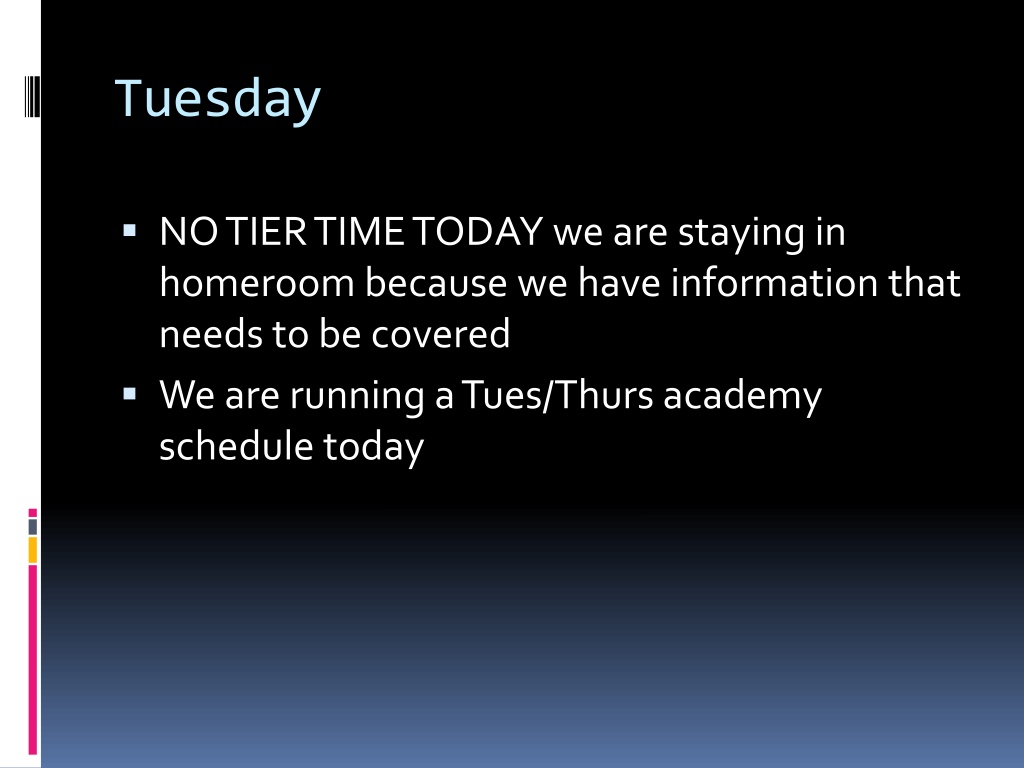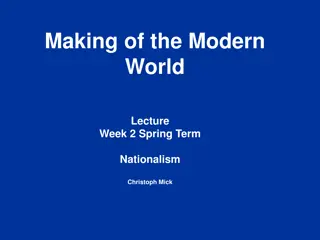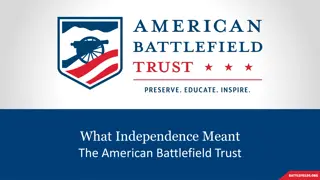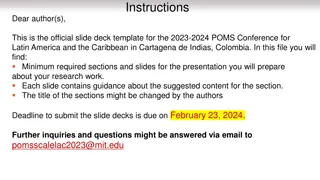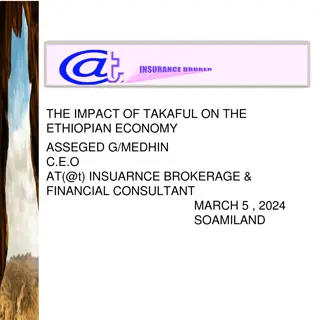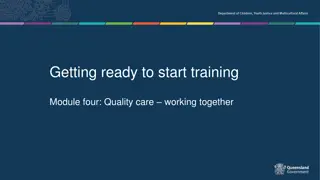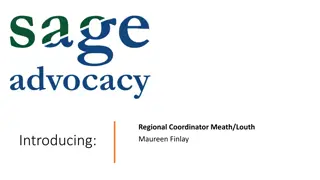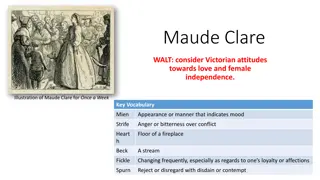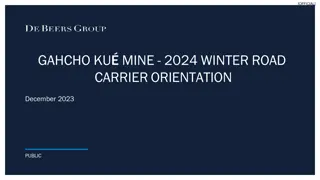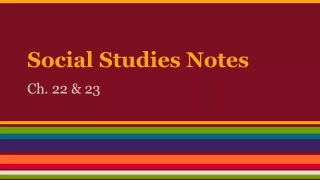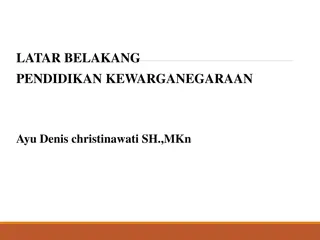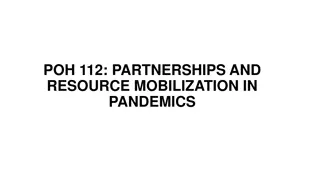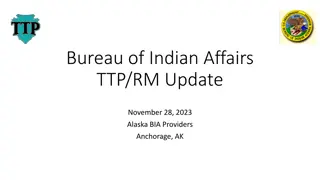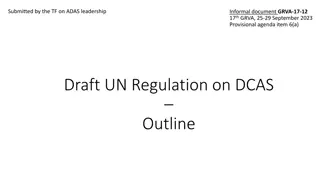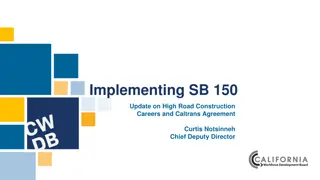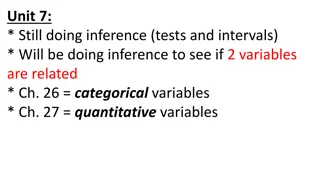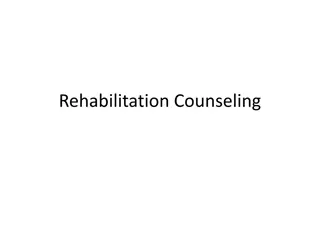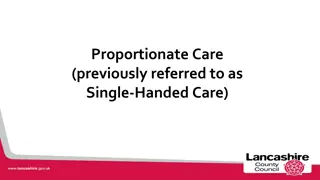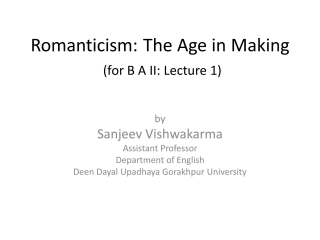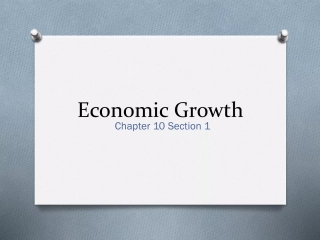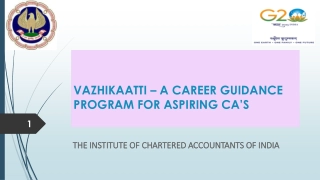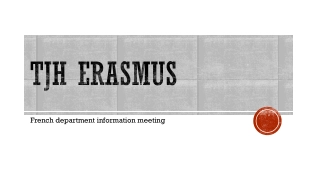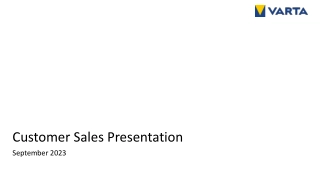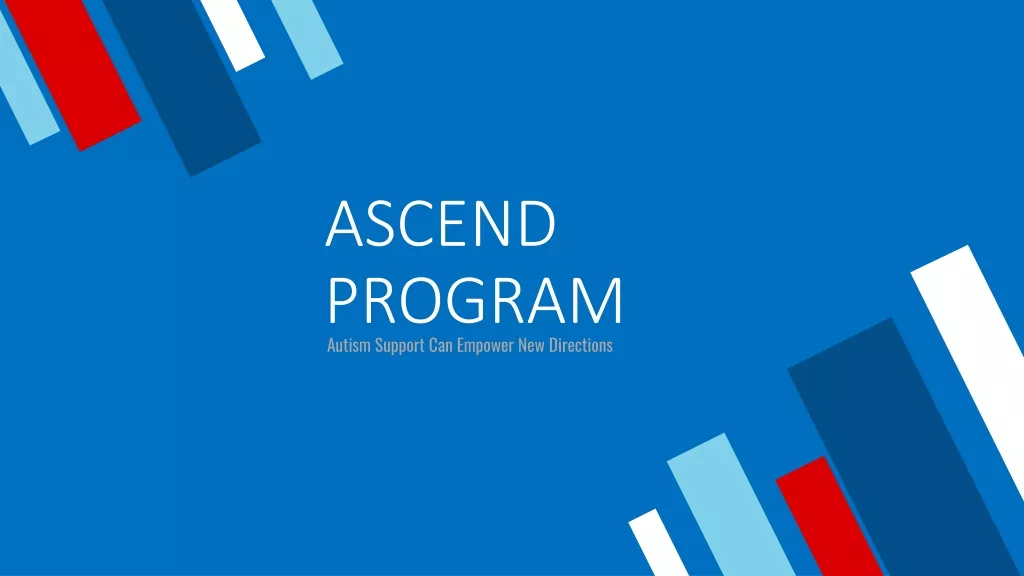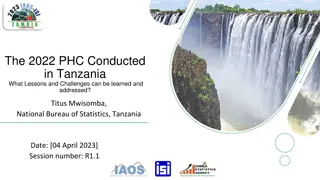Understanding Nationalism: India's Road to Independence
Explore the journey of India towards independence, driven by the rise of nationalism under British colonial rule. Learn about key figures like Mohandas Gandhi and the Indian National Congress in the fight for equality and liberation. Discover the impact of nonviolent protests and the sacrifices made by Indians in their pursuit of freedom.
Download Presentation
Please find below an Image/Link to download the presentation.
The content on the website is provided AS IS for your information and personal use only. It may not be sold, licensed, or shared on other websites without obtaining consent from the author. Download presentation by click this link. If you encounter any issues during the download, it is possible that the publisher has removed the file from their server.
Presentation Transcript
Tuesday NO TIER TIME TODAY we are staying in homeroom because we have information that needs to be covered We are running a Tues/Thurs academy schedule today
Tuesday warm up: What are the 4 main economic systems? What type of economy does China have? India? Japan? North Korea? Today we are taking part 1 of the History notes, you will finish the rest on Thursday in a station activity YOUR NEXT QUIZ IS NEXT FRIDAY 4/3 over History some econ and govtquestions will be on there!
History of SE Asia Standard SS7H3 A. DESCRIBE HOW NATIONALISM LED TO INDEPENDENCE IN INDIA AND VIETNAM
What is nationalism? The belief that all people should be loyal to those who they share common history, origins, customs with Belief/pride in your NATION
Indias road to independence Colonized by Great Britain, therefore under British colonial rule Nationalism started in 1800 s Indian s were 2ndclass citizens Best jobs were reservedfor the British Indian NationalCongress and Muslim League were two groups that were formed to protect the rights of Indians
Continued During WWI Indians fought along side British Hoping for change After war nothing changed, Indians still 2ndclass citizens Indians were outraged at their unfair treatment Protests started several Indians arrested under the RowlattAct Several were arrested and sent to jail without a trial Amristar ~ a major protest event that became a mass slaughter of over 400 Indians by the British
TIME FOR CHANGE IN INDIA! Who was Mohandas Gandhi? Born in 1869 lawyer Visited South Africa and completely disagreed with their apartheid system and unfair treatment of citizens Returned to India in 1914 Believedstrongly that people should be treated equally Gandhi encouragednonviolent protests against the British to bring change Who else do you know encouraged nonviolent protests? Believed that acts of goodness = positive reactions and acts of violence = negative reaction Led his followers in boycotts, hunger strikes, & a 240 mile walk to opposesalt tax Followers began to call him Mahatma which means great soul
Gandhi continued Following the massacre at Amristar, Gandhi encouraged more non-violentprotests to keep from more deaths occurring He preached a policy of Civil disobedience ~ nonviolent refusal to obey an unfair law Goal was to show how unfair the British colonial rule was Gandhi believed they had the moral advantage and the world began to see the violentacts of the British People world-wide were calling for British to give India their independence Slowly, the British colonial rule started to fall apart
An independent India 1935 ~ Government of India Act Great Britain gave India a little self-government After WWII ~ GB offered India independence Then a power struggle broke out between Indian Hindus and Indian Muslims about how country should run GB colonial rule officially ended in 1947 Partition (divided) country into 3 new countries: Hindu India ~ Center and largest because more Hindus East and West Pakistan ~ Muslim land smaller countries
NOW LETS TAKE A LOOK AT HOW VIETNAM ACHIEVED INDEPENDENCE
Vietnams road to independence Under Frenchcolonial rule French Indo-china (later Vietnam) French wanted natural resources Nationalismwas huge in French Indo-China The people in Vietnam saw themselves as separate from all of Southeast Asia
Ho Chi Minh Fought for Vietnamese independence Believed in Communism and wanted to make Vietnam a communist country Organized the Indochinese Communist Party Protested Frenchrule Went to jail and had to flee country Organized Vietminh League after WWII Fought against French forces for 9 years 1954 ~ French surrendered control to Ho Chi Minh
Geneva Convention 1954 and the Vietnam War US saw Ho Chi Minh as a communist threat US dividedVietnam into two territories North ~ controlled by Ho Chi Minh as a communist country South ~ controlled by US ~ goal was to establish a democracy and let citizens vote War broke out between the two as Ho Chi Minh wanted a UNITED COMMUNIST VIETNAM Vietnam War (US vs. North Vietnam lasted until 1975) NorthVietnamese forces took over as soon as US troops left, created the unified Republic of Vietnam Established as a communistcountry
SS7H3: The student will analyze continuity and change in Southern and Eastern Asia leading to the 21stcentury C. EXPLAIN THE ROLE OF THE UNITED STATES IN THE REBUILDING OF JAPAN FOLLOWING WWII
Pearl Harbor ~ December 7, 1941: A day that will live in infamy Japan bombed Pearl Harbor in 1941 The attack destroyednearly 20 American naval vessels, including 8 battleships, and almost 200 airplanes Over 2,000Americans soldiers and sailors died in the attack, and another 1,000 were wounded The next day, US declared war on Japan and joined the fight in WWII on the allied side
Hiroshima and Nagasaki August 6, 1945 US dropped an atomic bomb on Hiroshima, Japan The bomb was the equivalentof 20,000 tons of TNT flattenedthe city Approx.70,000 died immediately from the explosion and another 70,000 died from radiation within five years 3 days later, US dropped another atomic bomb on Nagasaki, Japan Japan is the only country to have been attackedby nuclear weapons
Rebuilding Japan with United States help Post WWIIand after the bombing, the country was in ruins industries, farms, and the government destroyed Gen. Douglas MacArthur~ US commander was put in charge of rebuildingJapan Japan s military = disbanded (broken apart) Weapons factories = closed MacArthur helped to establisha constitutional monarchy Constitution guaranteedJapanese citizens several of the same rights granted to Americans United States efforts in rebuilding Japan helped to make it one of the strongesteconomies in the world today Today, USand Japan have a pact that prohibitsthe use of nuclear weapons
SS7H3 EXPLAIN THE RISE OF COMMUNISM IN CHINA
Chinas history 1911~ Chinese Nationalist Party was in control Failed to provide for the needs of the people Communistparty headed by MaoZedong promised to improve their conditions Revolted against Chinese Nationalist Party Won power in 1949 and declared China a communist state The People s Republic of China Mao ~ leader of Chinese Communist Party (CCP) and head of government Virtually had complete control as a dictator
Maos failuresThe Great Leap Forward and the Cultural Revolution
The Great Leap Forward 1958 ~ put in place to speed up China s economicdevelopment (leap them into modernization) Collective farms were organized Communes were told what to produce by govt Within one year, the program failed Droughtsand floods damaged food supply Communesfailed to produce enough crops ~ as a result massive starvation 20 million people died during one of the largest famine in history
Cultural Revolution The failure of the Great Leap Forward made several people turn against Mao Chinese people began asking for reform/change Mao did not want any opposition to his rule or the communist government In 1960 he began the Cultural Revolution Schools shut down and students recruited into Red Guards/ Red Army Factories closed = weakenedChinese economy Government denied healthcare and transportation Cultural Revolution created mass chaos among the Chinese people
The end of Mao Zedong Mao Zedong died in 1976 Deng Xiaoping came to power Made several reformsbut maintainedCommunist values and government control Chinese citizens were deniedbasic rights Remainedin power until his deathin 1997
Tiananmen Square A protest that will forever be remembered Occurred in 1989 Student protesters filled Tiananmen Square for 7 weeks Practicing their rights to free speech and peacefully speaking out againstCommunism Protests spread throughoutall of China People asking for a democracy Government sent tanks into the square and opened fire which killed hundreds of thousands of people Countries world-widecondemned China for their actions After this event, Chinese government began to improve the human rights of their citizens
SS7H3 EXPLAIN THE REASONS FOR FOREIGN INVOLVEMENT IN KOREA AND VIETNAM IN TERMS OF CONTAINMENT OF COMMUNISM
Fear of communism Following WWII the Soviet Union was established as a communist country US and Soviet Union both superpowerstrying to prove which would be dominating world power The US sought out to spread democracy around the world and CONTAINcommunism Desiredto protect the rights of citizens world-wide The US believed that the spreadof communism would take over Korea and Vietnam Both of these countries were divided into a communist country and a southern section which was set up as a democracy
US involvement ~ democracy vs. Communism The US intervened in both Korea and Vietnam in efforts to contain communism and establish democracies Korean War 1950-1953 Vietnam War 1965-1975 Even though Vietnam became a communist nation, South Korea prevailed and has a republican government similar to the US Democratic forms of government proved more successful when the Soviet Union fell in 1991 There are still communist countries today, however the US efforts of containment were successful
